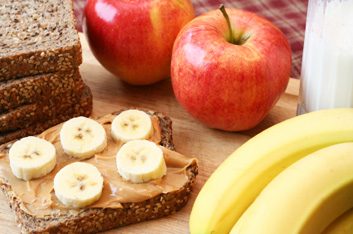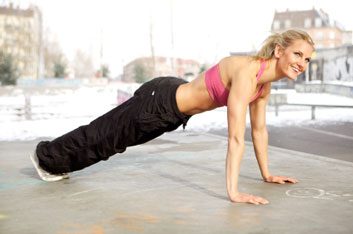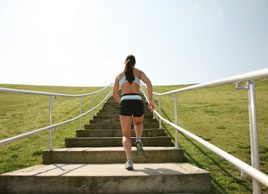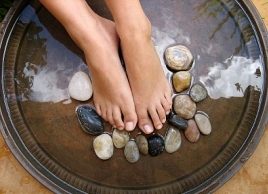
Running for ‘you’
In many ways, running is the perfect sport. You can do it straight out your front door, no travel time required. You can do it in a group or on your own, depending on your mood and availability. You can do it as much or as little as you like, with no consideration other than time. And it’s simple to set personal goals and measure your progress.
But what kinds of goals should you set, and how can you get there faster? Follow these tips to run longer, faster or just more often – without getting hurt.

1. Set the right goals
Among the most important factors in becoming a better runner is simply setting clear, achievable goals and then reaching for them, says Scott Myers of Nike Running. Maybe you want to run more frequently, for instance, so you set a goal of running four times a week this month, and don’t worry so much about the distance.
Choose a goal that’s meaningful for you and will make you enjoy running more, not less, and if it’s a longer-term goal, set sub-goals to reach along the way, suggests Myers. “A part of getting better could be just keeping it fun, enjoying the outdoors and making it social, improving times in races or favourite routes, or even just feeling better,” he says.
And make sure you have a good tracking system, too. It could be as easy as writing on a calendar, or you might want to treat yourself to a higher-tech system. “There are a lot of monitoring options now which will also make it easier to track and quantify your progress,” Myers says.
Try: Nike Plus is the classic web-based run tracker, available as a watch or wristband, iPod attachment or iPhone app, all with online social features. And Motorola’s new Motoactv system is an mp3 player and GPS fitness tracker in one, designed to track walking, cycling and other workouts as well as running.

2. Eat right
Your body needs fuel before and after your run – and during, if you’re going long distances (an hour or more). And while you might feel fine doing 20 minutes on an empty stomach in the morning before breakfast, you’re likely to run better with a bit of food in your stomach.
But every body is different, and what works for your best friend might be wrong for you. Experiment with different sizes and kinds of pre-run snacks – a banana with peanut butter, an energy bar or some dates and nuts are common options – to see what makes you run best. After your run, be sure to hydrate (just water is fine) and have a nutritious mini-meal that contains both carbs and protein. And if you’re out for long runs, pack an energy gel or snack that will keep your muscles fueled for the duration.
Try: Vega Sport Endurance Gel ($1.99 each) is based on dates and coconut oil and free of high-fructose corn syrup and unpronouncable ingredients.

3. Cross-train
Running more will make you a better runner, but so will doing other sports – and the more variety in your workout routine, the more balanced and less injury prone your body will be. Popular and useful cross-training routines for runners include swimming, cycling and yoga.
Strength training is also important and many runners say a stronger core makes them faster and improves their endurance. A spring or summer boot camp might be the push you need to get in better shape. “Many runners have benefited from cross and boot camp-style training,” says Myers. “Traditional weight training focuses on specific muscle groups, whereas cross-training fires more intrinsic muscles and many people find it overcomes the potential boredom of pumping iron.”
Try: Booty Camp (from $89.50) is run by women and holds sessions in Ontario, Alberta and New Brunswick. Outside those provinces? Search for outdoor boot camps where you live, or pick up Booty Camp’s DVD workout ($99) to get your muscles shaking, too.

4. Visualize success
“Top athletes in all kinds of sports use visualization,” says Myers – and, he adds, it’s often the most neglected component of people’s training routines. Believing you’ll improve is the first step to getting there, and if you’re running races, good visualization patterns can help you get the time you’re shooting for.
One trick Myers suggests trying is to “train under adversity” – that is, don’t just be a fair-weather runner. Hitting the road in bad weather, for instance, will give you a greater sense of accomplishment and a belief that you’ll be able to do well should rain or wind be in the forecast come race day. Mentally planning your route and what you’ll say to yourself when things get hard will help you get there, too, whether the goal is your first marathon or your first mile.
Try: Sometimes, all it takes to see yourself as a “real runner” rather than an imposter is a cute running outfit – which also makes a satisfying reward for reaching your running goals. Fitted capris like this pair by Reebok ZigTech ($64.99) are more flattering than shorts on most of us, good for a variety of weather and chafe-proof, too.

5. Change things up
The more you do something, the easier it gets – but when you’re trying to get fitter, that’s not necessarily a good thing. “Athletes of all calibers are constantly tweaking their training to find the optimum response from their bodies for their particular event,” Myers says.
Instead of running the same route over and over, try changing things up with a new course or speed. Add a track workout, hill repeats or stairs to build strength – it’s the most efficient way to become a faster runner – or simply go north instead of south when you walk out the door. Just make sure not to change too much too soon to prevent injuries.
Try: One hot trend is running barefoot, but it’s not for everyone, and it can be hard on your body to make the change. Lighter shoes, however, can shave seconds off your times with less risk. Try a minimalist shoe like the Nike Free Run+ 3 ($131.98), which Myers says “is intended to be the milieu somewhere between barefoot and wearing a traditional running shoe,” for track work and shorter runs to encourage your feet to work harder and your body to adapt.

6. Take care of yourself
The harder you train, the more work your body has to do to recover and rebuild damaged tissue. That means if you’re burning the candle at both ends due to work or family responsibilities, it might not be the best time to drastically step up your running.
Conversely, if you are adding difficulty to your fitness regimen, you’ll stay healthier and avoid injury by babying yourself a little, too. Get more sleep than you think you need, eat your vegetables and healthy fats and treat yourself to regular massages to keep your muscles in top form. And if something feels tweaky, take a rest day to keep the little aches and pains from turning into big ones.
Try: Pro runners swear by self-massage (as well as their no-doubt expensive personal trainers). Check your local running shop for a foam roller, which works wonders on tight and tired leg muscles, and ask them to show you some simple exercises. To get in deeper, pick up an Acuball, designed by Canadian chiropractor Dr. Michael A. Cohen. Roll the smaller ball under your feet to beat running-induced tension and tightness, and use the larger ball for your neck, back and legs.
Related:
• Running 101
• 5 reasons to run
• Should you try barefoot running?
